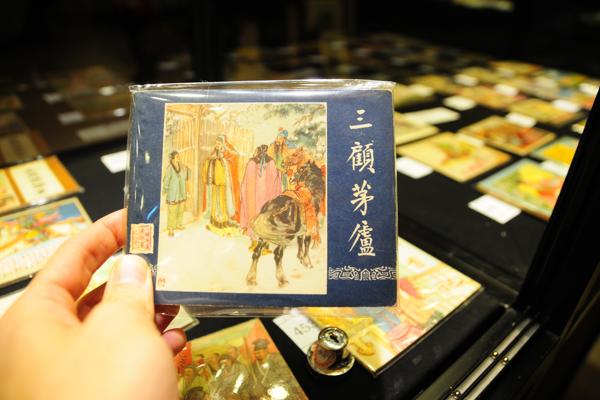
Lianhuanhua on display before an auction in Beijing.[Photos/China Daily]
For many Chinese born before the 1980s, traditional picture books, or lianhuanhua, are part of childhood memories.
In an attempt to revive public interest in the lost format, the first edition of Romance of the Three Kingdoms in the lianhuanhua style was recently reprinted.

A whole set of the picture book series.
Written by 15th-century author Luo Guanzhong, the novel is considered among China’s greatest classics. Its lianhuanhua version has sold tens of millions copies since first being published in 1957.
Lianhuanhua, which literally means “linked pictures”, originated in 1920s Shanghai. The palm-size book has a painting on each page, with a few lines of text below telling stories that range from the country’s traditional fables to modern literature. Each lianhuanhua book is usually less than 100 pages.
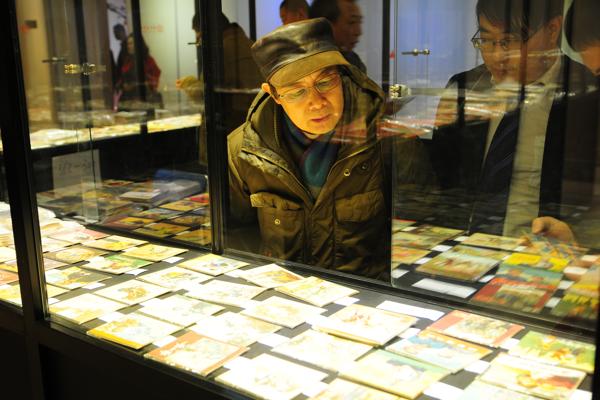
A collector views lianhuanhua on display before an auction in Beijing.
“Back then, there were lianhuanhua rent stalls in every corner of Beijing,” says Wang Jialong, the 74-year-old collector of such books, of his childhood in 1950s.
“After school, we all went to the stalls to read them.”
Romance of the Three Kingdoms tells the story of the many wars among feudal lords in China at the end of the Eastern Han Dynasty (AD 25-220). The first lianhuanhua edition of the novel, published by the Shanghai People’s Art Publishing House, came in a set of 60 books. All parts of the lianhuanhua weren’t released at once, says Wang.
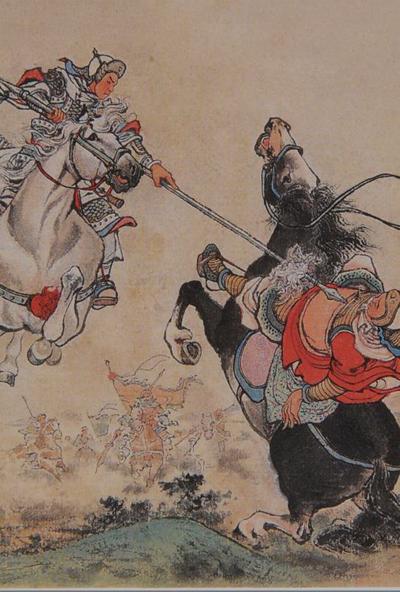
A artwork from the lianhuanhua edition of Romance of the Three Kingdoms.
“I bought them one by one, from the first book in 1957, to the last in 1961.”
In the latest version, the novel is again divided into some 60 parts, with most of the original paintings reprinted. Some visuals that were lost over time have been given a modern touch.
“At the time, the price of one book was around 0.2 yuan, and I usually saved a part of the money for breakfast to buy them,” says Wang, who has collected more than 23,000 books.
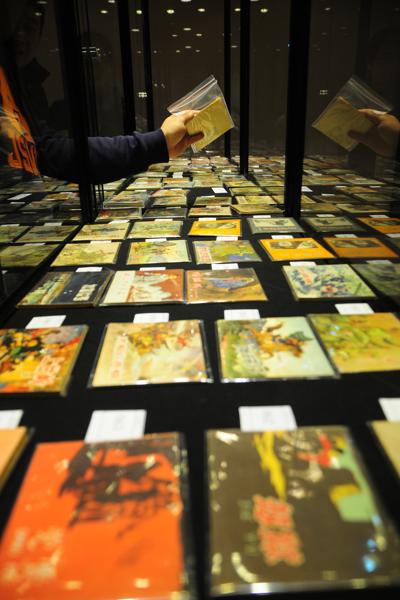
During the “cultural revolution” (1966-76), when many works of literature were destroyed because of their feudal themes, the lianhuanhua of the Romance of the Three Kingdoms was no longer printed. But amid all that Wang was able to hide his books and turn into a collector later in life.
The books returned to their earlier popularity in the mid-1980s, when lianhuanhua were being published by the hundreds of millions annually.
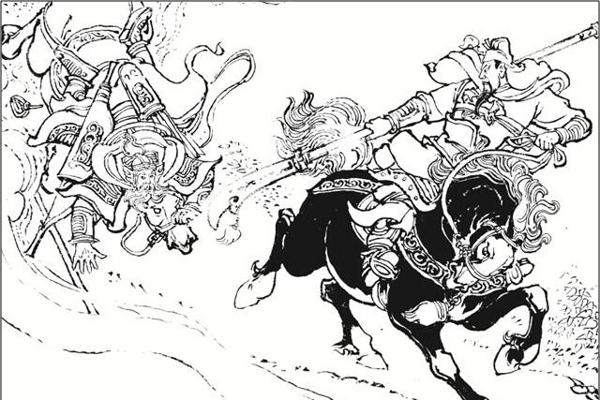
A artwork from the lianhuanhua edition of Romance of the Three Kingdoms.
As many other forms of entertainment, mainly TV and Japanese comic books and cartoons entered ordinary Chinese households as China ushered in economic reforms, lianhuanhua gradually disappeared again from the public eye. Since the mid-1990s, it has been difficult of find books in the format in stores.
But at the same time, almost, old lianhuanhua began to appear in the collector’s market at steep prices.
“A well-preserved lianhuanhua collection of the first edition of the Romance of Three Kingdoms is worth more than 1 million yuan ($159,800) today,” Liu Wei, the director of Beijing-based auction company, Guoxintaifeng, told China Daily on the sidelines of an auction held in Beijing, when more than 400 lianhuanhua went under the hammer, with opening bids at more than 1,000 yuan. Most collectors, between 40 and 60 years old, kept the books as a hobby during childhood.

A collector views lianhuanhua on display before an auction in Beijing.
Apart from the scarcity of lianhuanhua, the artistic value of the old books has driven prices high on the market.
There are around 6,900 artworks in the lianhuanhua series on the Romance of the Three Kingdoms by some 30 painters, many of whom were famous Chinese artists back then, and the original title for each book was drawn by renowned calligrapher He Tianjian.
In addition, each book has a stamp on its cover in a different shape and font.
Wen Zeyuan, president of Shanghai People’s Art Publishing House, told local media earlier that lianhuanhua as a traditional Chinese art form is relevant now despite the passing of time.
“Just as lyrical poetry of the Song Dynasty (960-1279) cannot replace the classical poems that had flourished during the Tang Dynasty (AD 618-907), the modern picture book, likewise, cannot replace lianhuanhua,” says Wen, adding that every year, more than 100 titles of lianhuanhua are reprinted by his publishing house.
